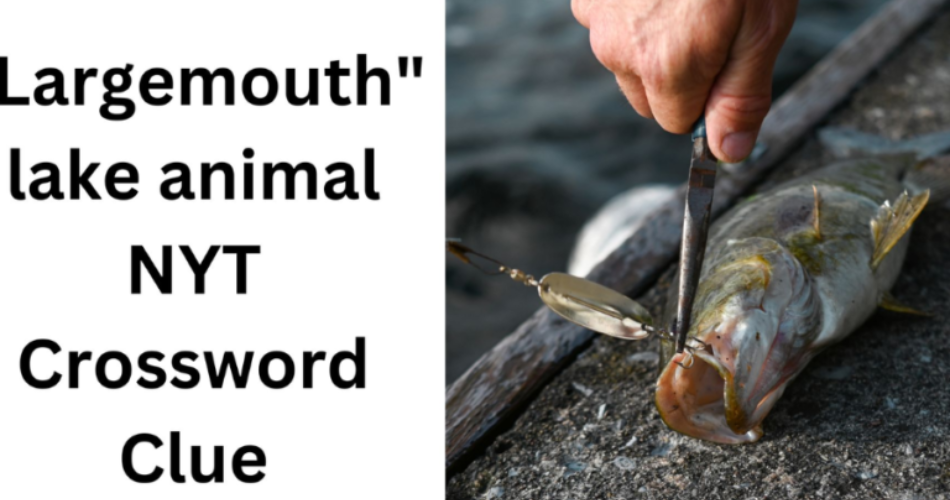
The Fascinating World of the Largemouth Lake Animal: Insights from The New York Times
Introduction
The world of wildlife is filled with remarkable creatures that captivate the imagination and spark curiosity. Among these, the largemouth lake animal stands out, capturing significant attention, particularly through its coverage in The New York Times (NYT). This article delves into the intriguing aspects of this animal, exploring its habitat, behavior, and the critical role it plays in the ecosystem. By examining how the NYT has covered this fascinating creature, we gain insight into its importance and impact on the environment, highlighting why it has become a subject of such fascination and study.
The Largemouth Lake Animal: An Overview
The term “largemouth lake animal” typically refers to the largemouth bass, a prominent species within freshwater ecosystems renowned for its striking appearance and ecological role. Scientifically named Micropterus salmoides, the largemouth bass is easily identifiable by its large, gaping mouth, which extends beyond its eyes. This distinctive feature not only aids in its feeding strategy but also establishes it as a dominant predator within its aquatic habitat. The largemouth bass’s ability to consume a wide variety of prey, from smaller fish to amphibians, highlights its role as a key player in maintaining the balance of its ecosystem.
Predominantly found across North America, the largemouth bass is highly adaptable, thriving in diverse environments such as lakes, rivers, and reservoirs. Its presence in these varied habitats underscores its ecological versatility and resilience. The New York Times has extensively covered the largemouth bass, recognizing its importance in both ecological studies and recreational fishing. Articles often explore its impact on biodiversity, its economic significance in sport fishing, and its role in maintaining the health of freshwater systems. This comprehensive coverage reflects the largemouth bass’s standing as both a crucial component of freshwater ecosystems and a beloved target for anglers.
Habitat and Distribution
The largemouth lake animal is predominantly found in the United States, ranging from the Great Lakes region to the southeastern states. This species prefers warm, slow-moving waters with ample vegetation. The presence of submerged structures such as logs and rocks is crucial for their habitat, providing both shelter and hunting grounds.
The NYT has reported on various studies and observations regarding the largemouth bass’s habitat. These articles often emphasize the importance of preserving natural water bodies to ensure the survival of this species. Reports have detailed how changes in land use, water quality, and climate affect the distribution and health of largemouth bass populations.
Behavior and Diet
The largemouth bass is known for its voracious appetite and aggressive hunting techniques. It primarily feeds on smaller fish, insects, and amphibians. Its large mouth and sharp teeth enable it to capture prey efficiently, making it a dominant predator in its habitat.
Behavioral studies featured in The New York Times reveal fascinating insights into the largemouth bass’s feeding habits and territorial nature. For instance, the NYT has covered how largemouth bass exhibit specific behaviors during spawning seasons and how they respond to changes in their environment.
Ecological Impact
The largemouth bass plays a crucial role in maintaining the balance of its aquatic ecosystem. As a top predator, it exerts significant influence over the population dynamics of smaller fish and aquatic insects. By preying on these organisms, the largemouth bass helps regulate their numbers, which in turn supports the health and stability of the entire ecosystem. This predatory role is essential for preventing overpopulation of smaller species, which could otherwise lead to imbalances that negatively affect water quality and the health of aquatic vegetation.
Articles in The New York Times frequently highlight the ecological significance of the largemouth bass, emphasizing how its presence or absence can serve as an indicator of broader environmental changes. The NYT’s coverage often includes insights from scientists and conservationists who stress the importance of protecting this species. They argue that maintaining healthy populations of largemouth bass is critical for sustaining balanced and resilient aquatic ecosystems. Through interviews and in-depth reports, The NYT underscores the need for ongoing conservation efforts to ensure the long-term health of our water bodies and their ecosystems.
Conservation Efforts
Despite its adaptability, the largemouth bass faces various threats that could impact its populations. Habitat destruction, pollution, and overfishing are among the primary concerns. The NYT has published numerous pieces on conservation efforts aimed at protecting the largemouth bass and its habitat.
The New York Times often features stories about initiatives to improve water quality, restore natural habitats, and implement sustainable fishing practices. These efforts are crucial in ensuring the long-term survival of the largemouth bass and maintaining biodiversity in freshwater systems.
The Role of Recreational Fishing
Recreational fishing is a significant aspect of the largemouth bass’s appeal. Anglers prize this species for its challenging catch and its value in sport fishing. The NYT has covered the impact of recreational fishing on largemouth bass populations, discussing both positive and negative aspects.
While recreational fishing contributes to local economies and promotes outdoor activities, it also raises concerns about overfishing and its effects on fish populations. The NYT’s coverage often includes perspectives from both anglers and conservationists, highlighting the need for balanced approaches to fishing regulations.
Recent Developments and Findings
Recent articles in The New York Times have provided updates on new research and discoveries related to the largemouth bass. These findings offer valuable insights into the species’ behavior, genetics, and response to environmental changes.
For example, the NYT has reported on advancements in genetic studies that help scientists understand the evolutionary history and genetic diversity of largemouth bass populations. Such research is crucial for developing effective conservation strategies and ensuring the species’ resilience.
Challenges and Future Prospects
The future of the largemouth lake animal faces several challenges. Climate change, habitat loss, and pollution are pressing issues that require ongoing attention. The NYT has covered these challenges extensively, highlighting the need for comprehensive solutions to address these threats.
Future prospects for the largemouth bass depend on continued research and conservation efforts. The NYT’s coverage underscores the importance of collaborative efforts among scientists, policymakers, and the public to protect this iconic species and its habitat.
Conclusion
The largemouth lake animal, particularly the largemouth bass, is a fascinating species with a significant role in freshwater ecosystems. The New York Times has played a crucial role in bringing attention to this species, covering its habitat, behavior, and conservation needs. Through its insightful reporting, the NYT has highlighted the importance of protecting the largemouth bass and ensuring the health of aquatic environments.
As we continue to learn more about the largemouth bass and its role in the ecosystem, it is essential to support conservation efforts and stay informed about the challenges facing this remarkable species. The NYT’s coverage serves as a valuable resource for understanding and appreciating the largemouth lake animal and its place in the natural world.
Stay in the know with the latest news and updates on MumbaiBreaking

